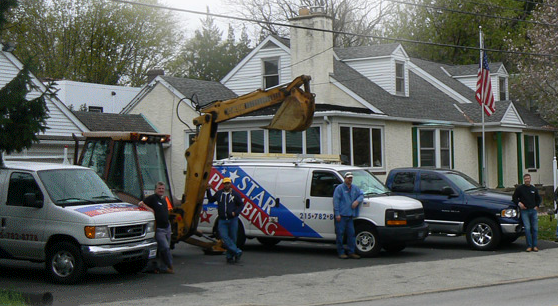Do You Need To Vent Your RV Plumbing? Here’s How
Do You Need To Vent RV Plumbing? is a guide that helps RV owners understand the importance of proper venting for their plumbing systems. It explains why proper venting is important and what type of venting is needed. It also covers topics such as understanding the importance of air admittance valves, avoiding traps, and connecting pipes to vents. In addition, it provides tips on how to maintain and troubleshoot RV plumbing to ensure it functions correctly and safely. This guide can help RV owners save money by avoiding costly repairs due to improper venting.
Do You Need To Vent RV Plumbing?
Venting is a critical part of any plumbing system, whether it’s in an RV or a traditional home. Without proper venting, air will become trapped in the pipes and create a vacuum that can cause water to siphon out of the system. This can lead to water damage and other plumbing issues. Additionally, proper ventilation ensures that the water pressure remains consistent throughout the system.
What is RV Plumbing Venting?
RV plumbing venting refers to the process of releasing air from a plumbing system. This is usually accomplished through pipes that are installed along the roofline or higher up on the side of an RV. The vents draw air into the system as it needs it, which helps maintain an adequate air pressure and provides proper ventilation for any odors or gases released from the plumbing fixtures.
Benefits of Proper Venting
The benefits of proper venting for RV plumbing systems include:
• Improved water pressure – Without proper ventilation, air can build up in your pipes and reduce water flow. Proper ventilation helps ensure that your pipes are able to handle higher levels of water pressure without bursting or leaking;
• Reduced odors – Without proper venting, gases released from your sinks and showers can be trapped within your RV’s walls and cause unpleasant odors;
• Reduced risk of freezing pipes – During cold weather, unvented plumbing systems can freeze more quickly than vented ones;
• Reduced risk of backflow – Without proper venting, backflow occurs more easily in plumbing systems due to changes in atmospheric pressure;
• Reduced risk of sewer gas leaks – Sewer gas leaks occur more easily when there isn’t adequate ventilation for your plumbing system;
• Improved efficiency – Properly vented plumbing systems are more efficient than unvented ones because they reduce friction throughout the system and help keep air from becoming trapped in your pipes.
Proper Installation of Vents
It is important to make sure that you properly install vents for your RV’s plumbing system. The vents should be located at least six inches above any roofline or higher up on the side of an RV where possible. If you are installing them on a wall, make sure they are at least two feet away from any windows or doors so they won’t be blocked by other structures. Additionally, make sure that you use durable materials such as metal or PVC piping so they will last for years without needing repairs or replacements.
Types of Vents For RV Plumbing
There are two types of vents commonly used for RV plumbing: stack vents and exhaust fans/dry vents. Stack vents are typically used when there is no access to outside air (such as when installing a new fixture). These types of vents draw air into the pipe through their opening near the top and release it through their opening near the bottom. Exhaust fans/dry vents are usually used when access to outside air is available (such as when connecting a sink drain) because they pull outside air into the pipe through their opening near the bottom and release it through their opening near the top. Both types of vents play an important role in maintaining adequate airflow within your RV’s plumbing system so it runs properly and efficiently over time.
Do You Need To Vent RV Plumbing?
Venting an RV plumbing system is an essential part of the process of ensuring that your plumbing system is safe and functioning properly. Without a proper vent, wastewater can back up and cause damage to the pipes, fixtures, and other components. Properly venting your plumbing will also help to prevent odors from seeping into the surrounding area. It is important to understand what type of vents are necessary for your RV plumbing system in order to make sure it is working properly.
Types of Vents Used for RV Plumbing Systems
When it comes to venting an RV plumbing system, there are two main types of vents that are used: air admittance valves and side wall and roof exhaust vents. Air admittance valves are typically located near the drain line that leads outside of the RV. This type of vent allows air to be drawn into the drain pipe as water drains out, which helps prevent a vacuum from forming in the pipes. Side wall and roof exhaust vents are placed higher up in the piping system in order to help push air out through the topmost portion of the piping system.
Important Factors To Consider With Venting An RV Plumbing System
When it comes to properly venting an RV plumbing system, there are some important factors that need to be taken into consideration. The first factor is calculating drain and sewer pipe sizes. It is important to calculate these sizes correctly so that there is enough space for both water flow and ventilation in order for proper functioning. Additionally, when choosing a vent route, it is essential that all potential obstructions such as trees or other structures are taken into account so as not to impede airflow or cause blockages in the plumbing system due to lack of space or improper routing. Finally, depending on local regulations, certain types of vents may need additional permits or licenses in order for them to be installed properly within your area’s jurisdiction.
Overall, understanding how best to vent an RV plumbing system is essential for making sure that your RV’s plumbing functions properly while also preventing wastewater backups which can cause serious damage both inside and outside of your vehicle. By taking all relevant factors into account when choosing types of vents as well as ensuring proper sizing and routing, you can ensure a safe and efficient functioning plumbing system for years to come!
FAQ & Answers
Q: What is RV plumbing venting?
A: RV plumbing venting is the process of allowing air to circulate within a plumbing system, which helps to prevent the buildup of pressure and maintain water flow. The air being vented must be able to move freely through the pipes, so vents must be properly installed and strategically placed for maximum efficiency.
Q: What are the benefits of proper venting?
A: The main benefit of proper venting is that it helps to maintain water flow throughout the plumbing system. Without adequate ventilation, pressure can build up in the pipes, which can lead to blockages and disruptions in service. Properly vented pipes also help to reduce noise from gurgling drains and improve overall water pressure.
Q: What types of vents are used for RV plumbing?
A: There are several different types of vents that can be used for RV plumbing. These include plumbing stack vents, exhaust fans and dry vents, air admittance valves, and side wall or roof exhaust vents. Each type has its own advantages and disadvantages in terms of installation and performance, so it’s important to choose the right type for your particular application.
Q: What factors should I consider when installing a vent for my RV plumbing system?
A: When installing a vent for your RV plumbing system, it’s important to consider both the size of drainpipes and sewer pipes that will be connected to it as well as potential routes that could be used for routing the vent pipe. It’s also important to make sure that any fittings used are compatible with both the type of pipe material being used as well as any other materials or products they may come into contact with during installation or use.
Q: What is an air admittance valve?
A: An air admittance valve (AAV) is a specialized type of check valve designed specifically for use in residential or commercial applications where there is no access to an outside source of ventilation. AAVs allow air into the drainage system when negative pressures occur inside, thereby maintaining an adequate balance between pressure and airflow within the drainage system.
In conclusion, venting RV plumbing is an important step in maintaining the water system of an RV. It ensures that the air pressure in the plumbing system stays balanced and helps prevent sewer gases from entering your vehicle. Venting also helps to reduce water hammer and can help to improve the overall performance of your RV’s plumbing system. Venting is not a difficult job, but it is important that you take the time to make sure it is done properly so that your RV’s plumbing system functions at its best.
Author Profile

-
Star Plumbing, located in Elkins Park, PA, is a full-service plumbing company owned and operated by Mitchell Gordon. Since its inception, Star Plumbing has been providing its customers with reliable, quality plumbing services.
The Star Plumbing website offers informative articles on DIY plumbing and plumbing equipment, offering readers helpful advice and tips on how to take care of their own plumbing needs. This is a great resource for those who are looking to tackle a plumbing project themselves, as it provides useful information and advice on how to safely and successfully complete a plumbing job. Additionally, the website provides detailed descriptions of the various plumbing tools and equipment that are available, as well as detailed instructions on how to use them.
Star Plumbing’s website is a great resource for anyone with plumbing needs. Whether a customer is looking for advice on how to take care of their own plumbing or to schedule service from Star Plumbing, the website offers helpful advice and information for all their plumbing needs.
Latest entries
- April 12, 2024Plumbing Equipment And AccesoriesI Tested And Ranked The Best 10 Inch Rough In Round Toilet In 2024: And Here’s What I Found
- April 12, 2024Plumbing Equipment And AccesoriesI Tested And Ranked The Best Stone That Cleans Toilets In 2024: And Here’s What I Found
- April 12, 2024Plumbing Equipment And AccesoriesI Tested And Ranked The Best Heat Tape For Plumbing In 2024: And Here’s What I Found
- April 12, 2024Plumbing Equipment And AccesoriesI Tested And Ranked The Best Kaboom Toilet Bowl Tablets In 2024: And Here’s What I Found
